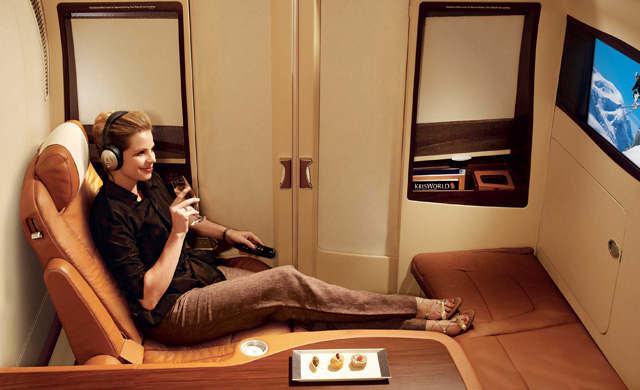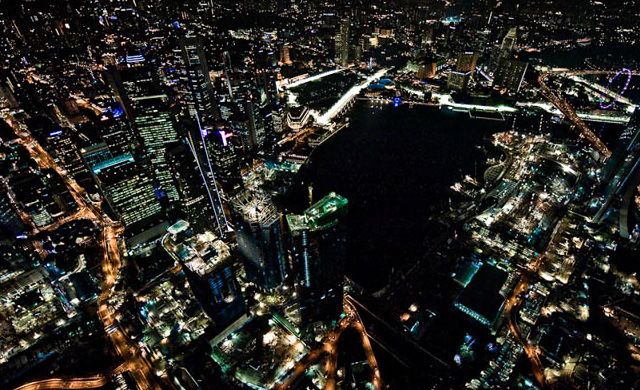
HOW TO TAKE GREAT TRAVEL PHOTOS
 Athit Perawongmetha is a professional photographer whose work has appeared in AFP, National Geographic, Hello, Osotho, Lifestyle+Travel and Honeymoon & Travel magazines. We ask him for his top tips on what makes for good photos, both of landscapes and people, on your travels.
Athit Perawongmetha is a professional photographer whose work has appeared in AFP, National Geographic, Hello, Osotho, Lifestyle+Travel and Honeymoon & Travel magazines. We ask him for his top tips on what makes for good photos, both of landscapes and people, on your travels.
Look at locals
I love to take photos of people from the places I travel to. Photos of people living their traditional lives give more variety to your photo set.
See the light
Avoid taking photos between 11am-3pm. Get up early for a morning session around 7-8am then go eat and rest before heading out for an afternoon session between 4-5pm. Very bright mid-day sunlight creates too much contrast on skin and objects. My favorite moment is the time before the rain, when there’s a combination of yellow light and dark clouds.
Pick the season
Different places look most beautiful at different times of the year. You need to do some study before going on a trip. For example, if you need a nice photo of lush mountains in the North, September, at the end of rainy season and the beginning of winter, is the best time: you’ll see both lush green trees and foggy mist in the air.
Be a copycat
The easiest way to get the right angle is to learn from postcards sold nearby. Those postcards were taken by photographers who tried several angles and picked the best one. You can simply copy that angle.
BE PREPARED
If you want a sunrise shot, go to the spot at least 30-45 minutes before the first light appears as you need time to set things up and fight with others for the best spots. I have waited for four hours just to take a photo of the sunset. Go inspect the spot one day before the shooting if possible.
Use your compact
Normal compact cameras with 24-28mm lens are normally fine if you’ve got the right light, weather and time. Large DSLR cameras just make pictures look a bit more exciting—but you don’t always need pictures to publish in magazines, right?
Expect the unexpected
You cannot control the weather and animals so, my recommendation is to just pray a lot for that perfect moment.

HOW TO TAKE GREAT PORTRAIT SHOTS
 Kachain Wonglaemthong, Chief Photography Editor of Daypoets, has shot legions of local artists and celebrities for Hamburger Magazine and hosts of CD covers. Here, he shares a few tips for shooting stunning portraits.
Kachain Wonglaemthong, Chief Photography Editor of Daypoets, has shot legions of local artists and celebrities for Hamburger Magazine and hosts of CD covers. Here, he shares a few tips for shooting stunning portraits.
Start with a talk
If both parties (photographer and model) don’t know each other, a talk will break the ice and allow for more casual poses.
Look at the face
Not everybody has a perfect face shape. So you need to try several times to find the best angle for that person. Somebody might have their own favorite pose, which is probably not the best angle for a portrait shot. You also need to persuade him/her to try other angles too.
Keep it warm
If a studio with a perfect lighting set is not an option, I prefer warm sunlight, around mid-afternoon, when it’s not too bright and doesn’t create harsh, high-contrast shadows.
Focus on emotions
Emotion is the most essential element of a portrait. Good portraits must be able to communicate something. You are taking photos of humans so don’t make them look like mannequins. Try shooting people expressing different emotions and movements. Leave some wrinkles while retouching, too. I don’t follow the old-school rule that you need to see the eyes. I only focus on the emotions of the person I shoot.
Black and white always helps
If you cannot really control the light, poses and emotions of your subject, go for black and white—monochrome often helps portrait photos look more interesting.
Forget fancy gadgets
No need to use high-end cameras or lighting. If you get the perfect angle and natural light, even a phone camera can take a great portrait.
HOW TO TAKE GREAT FOOD SHOTS

1.) Do lunch. Artificial light sucks. There’s just no way to compensate for how ugly it is. Besides, you can eat in the best restaurants at a fraction of the cost during lunch. Ask for a table next to a big window and snap away.
2) Lean back. Food doesn’t like wide angles and should be shot at least at arm’s length. The problem with using the longer end of your zoom in dimly lit restaurants is blurry pictures from hand shake. Try using the back of your chair as a tripod.
3.) Tuck in. A messy plate of half-eaten food is gross, but that cake will look a lot more exciting with a fork cutting into it. The other variations are chopsticks holding up some noodles, knife cutting into steak—it can get cheesy done systematically though.
4.) Get a fixed focal lens. If you have a DSLR, a 50mm f/1.8 is quite simply the cheapest lens out there. On most consumer DSLRs, this lens acts like an 80mm, which is a really nice focal length for food photography. Stop it down just a tad, f/2 or f/2.5, and you’ll get really shallow depth of field, an easy trick to make anything look great. Also, you need very little light to use this lens.
5.) Move around. Some food looks great from above, like a colorful bento box. Some food is much more vertical (the French seem to love to create little piles of stuff in the middle of oversized plates) and is best viewed with your chin practically on the table.
6.) Cheat. Point #4 was all about creating shallow depth of field (blurry fore and backgrounds). With a mobile phone, you’ll just have to fake that effect. On Adobe’s Photoshop Express App, use the “vignette blur” effect. On Instagr.am, use the “tilt-shift” mode, which allows even more control. Both apps are free (see right).
7.) Style, baby. Point #3 is actually an example of styling, where you groom your food and arrange it to look more exciting. But there’s a lot more you can try out. Starched napkins tucked behind a plate offer a clean, but subtly textured background, for example. Don’t get cheesy and arrange a ton of silverware and long stem glasses, though. Less is more.
8.) Shoot in 3D. The greatest problem you’re facing as a food photographer is that you’re showing a 3D object in 2D, hence the need to add texture. That’s done by sculpting the food with light. Most often your light should come from almost behind the food, at 2 o’clock if you’re facing the plate and looking at it from above.
9.) Overexpose. When your camera sees a big white plate, it freaks out and dials the exposure down. It’s trying to make your plate an average gray. Dial up the exposure compensation by +1 or +2 EVs (stops, or exposure values) so that your plate’s highlights are overexposed and your food is just right.
10.) Don’t love food too much. You need to make a choice: do you want to eat great food or take great pictures? We’ve eaten many sad cold dishes that were brought to us in all their steaming glory before they withered before our lens. If you love food, just eat it.
CAMERA SHOPS
GET IT FOR LESS
Just a few meters away from Saphan Lek, across from Merry King, is Pirom Plaza (Mahachai Rd., Wangburapa, www.piromplaza.com). This is a convenient spot to pick up secondhand cameras, particularly at Takeshi Camera (2/F, 02-222-8700 ext. 241). There, you can find an old twin-lens Yashica film camera for roughly B4,000. The place is full of shops, so just go for a browse. Pirom Plaza sometimes also has gray market cameras. These are new, original models from big brands like Canon, Sony and Nikon. They’re sold cheaper than in other shops because they’re not imported through official channels. Try Viewfinder (2/F, 081-849-4595. www.viewfindercamera.com), though last time we checked, they only had models from Canon Thailand. You can also head to Pantip for gray market cameras. Be forewarned that Canon Thailand will not cover the one-year guarantee on such cameras, though. Ask the shop about this and you will be told the camera comes with a “shop” guarantee, which is (not very) inspiring, when it comes from a gray market store.
GO PRO
If you’re a serious shooter, you’re going to want real service when your camera goes crazy, so don’t buy at Powerbuy (or the aforementioned dodgy places). Instead, head to Fotofile (www.fotofile.net). They’re spread out through MBK, with shops on the first, second, third and and fifth floors but we like the 3/F shop best. They’re always busy, and not very talkative, but they’ll really help you out if you have problems with stuff bought at their store—particularly Canon gear. There’s also one in The Mall Bangkapi (1/F, 02-363-3250), one in Central Rama 3 (3/F, 02-673-6050), and another in Central Bangna (3/F, 02-745-7282). They can be a tad more expensive but we think it’s worth it. (They also do secondhand on the ground floor of MBK.) For yet more superlative service, get your Nikon gear from the Niks Thailand store (166 Silom Soi 12, 02-235-29-29/35). We’ve dealt with them, too, and they really go that extra mile.
TOY CAMERA
Toy cameras encompass instant film cameras and old cameras with such poor optical qualities that your snaps come out looking all arty—basically what Instagram does on your iPhone, only with film. Fotoguffy (www.fotoguffy.com, 081-647-7371) is situated in Soi Chula 50, behind the old Sam Yan market. Khun Boy, the owner, buys his rare toys from eBay, like a B2,500 navy Polaroid 600 or a D.I.Y. GakkenFlex 35mm TLR for B2,100. Fotoguffy opens on Mon, Wed and Fri, 6.30-9.30pm and Sat 4-8pm. If you prefer not to fight the prime-time Bangkok traffic, online shopping is available through the website with an extra B100 for delivery. The more convenient alternative is Digital Gateway (BTS Siam) where you can browse through the many shops selling toy cameras on the 2/F and 3/F. iTrendy (2/F, 085-514-8397), for example, has both mass-produced and limited-edition cameras. You can get a yellow or black Superheadz Blackbird Fly lomo camera for B5,500 and other limited edition cameras from this Japanese brand and from Lomography. We think it’s more fun to just get an old camera from Fotoguffy or Pirom Plaza, but it’s your call.

TOP Free Photography Apps
iPhone
Leme Cam
Eight lomo and high dynamic range (HDR) styles, fifteen photo effects and eleven frames are packed together in this super cute interface app. Unlike others on iTunes, Leme lets you choose the camera and lens before you shoot then, either save it onto your camera roll, email or share it online through Facebook or their Leme photo network.
Instagram
Instagram works almost like Flickr where you can browse thousands of creative photos that other users uploaded. But this application also allows you to apply retro Polaroid-like effects to your images. Choose a preferred effect, name the photo and then share with your Instagram buddies (and Facebook). In turn, you can also follow anyone you admire and to see their regular updates. Sharing and commenting makes this app a lot more fun.
Camera+
The application has an easy-to-use interface which lets you develop multiple effects onto your images. There are scenery, cropping, special effects and framing options. There is also HDR and auto contrast adjustments to fix sub-par pictures with one touch of the screen. Photos are then added to your private camera roll immediately without pestering you to share them online.
Action Cam
Fun multiple photo shooting is what this app is all about. You can choose from a 2x2, 4x1, 4x2, 3x3 or a tricolor photo booth framing style. Different timing is also made available including a manual mode. There are two color effects to choose from: Romo (Lomo) and ocean tide.
Adobe Photoshop Express
This app from Adobe isn’t particularly fun, but it’s the only one to offer actual Photoshop-like controls: saturation, contrast, sharpening, etc. The effects and frame options are really lame, though.
Android
Roidizer
This app helps you create a Polaroid picture with a caption in just one click. Take a new photo or choose photos from your gallery and turn them into Polaroids. Then type the caption in and share it to social networks including Facebook, Twitter and Tumblr.
Pudding Camera
All the menus are in Korean, but with simple icons you’ll get used to it after some trial and error. The app allows you to take photos with seven choices of toy camera features including fisheye, fantasy color, motion 2x2 lens and motion 4x lens with eight choices of film from vignette to noir. You can swap to the front camera to take photos of yourself too.
BlackBerry
PixTrix
PixTrix is one of the best BB photo apps with 13 styles of photos, from Instant Autumn and Half Sepia to RG Contrast and Lomo (our favorite). Its newest version also allows you to adjust brightness, contrast, hue and saturation as well as rotate and share photos to Facebook.
HIP BAGS FOR HOTSHOTS

1.) Billingham 335. B20,800 from Fotofile
2.) Louis Vuitton Damier Graphite. B73,200 from Louis Vuitton
3.) Herringbone leather and canvas. B7,500 from Mayisell
4.) Vida Classic Wide Chocolate. B2,500 from Loft
5.) Korean artificial leather. B450 from Mink
6.) Tenba Messenger Photo. B3,100 for small, B3,300 for large from Mee Camera

7.) Vlashor Scottish-print canvas. B2,500 from Loft
8.) Herringbone 2011 Discovery Canvas Small. B2,590 from Mayisell
9.) Billingham f/Stop 2.8. B8,900 from Gadget Villa
10.) Herringbone V2 genuine leather. B11,500 from Mayisell
11.) Herringbone Canvas. B6,500 from Mayisell
12.) Vida Classic Wide Brown. B2,500 from Loft
Essentials
Fotofile. 1/F, MBK Center, 02-620-9200. BTS National Stadium. www.fotofile.net
Gadget Villa. 085-255-5589, www.gadget-villa.com
Loft. 4-5/F, Siam Discovery, 02-658-0328/-30. BTS Siam. www.loftbangkok.com
Louis Vuitton. G/F, Gaysorn, 02-656-1010. BTS Chit Lom.
May I Sell. www.mayisell.com
Mee Camera. http://tiny.cc/bv9rz
Mink. http://tiny.cc/e7d1e
PETITE BUT PRO The Latest Crop of Mirror-Less Cameras
Sony NEX-C3
 Price: B21,990 (18-55mm lens) or B24,990 (18-55mm + 24mm F2.8 lens)
Price: B21,990 (18-55mm lens) or B24,990 (18-55mm + 24mm F2.8 lens)
Specs: 16MP / 720p HD video / 225 grams / ISO100-12,800
The second generation of the popular NEX series sees a number of improvements: lighter, more user-friendly interface, swivel LCD screen, and a host of fun effects like pop art looks, retro tones and 3D panoramas. There are three colors to choose from: black, silver and bold pink.
Olympus E-PL3
 Price: B27,990 (14-42mm)
Price: B27,990 (14-42mm)
Spec: 13.1MP /1,080p full HD video / 265g / ISO100-12,800
The E-PL3 is perfect fit for style-centric photographers as it looks more fashionable than the E-P3 white and comes with better features than the younger sister E-PM1. Olympus also claims that with its latest technology all three cameras feature the world’s fastest auto focus.
FujiFilm X100
 Price: B32,990 (23mm fixed)
Price: B32,990 (23mm fixed)
Spec: 12MP / 720p HD video / 445g / ISO100-12,800 / built-in flash
One of the most sought-after at the moment, due to a production problem in Japan, Fujifilm’s first vintage-designed, Leica-like magnesium alloy camera comes packed with top-notch specs. Highlights, apart from its classy feel, include the hybrid view finder system and the lens. Though it is not interchangeable, the 23mm single-focus Fujinon len is actually equivalent to 35mm full frame so you can still get a pretty wide angle.
Panasonic Lumix GF3
 Price: TBA
Price: TBA
Spec: 12MP / 1,080 full HD video / 264g / ISO160-6,400 / built-in flash
Only six months after the launch of the GF2, Panasonic decides to put the GF3 on the market to fight with NEX and PEN. Built on the GF2 platform, GF3 is simply a smaller offspring with few improvements (like better continuous shooting speed and new Intelligence Auto mode) for a more amateur photographer. Launched in Japan this month and should be here very soon.
REVIEW Canon 600D
 Signing up for those language classes that you’ve been putting off could deter early bouts of dementia and Alzheimers’s Disease, says a study from the Neurology Journal. Another study from Penn State also found that bilinguals are better at prioritising, multi-tasking, and focusing on important things.
Signing up for those language classes that you’ve been putting off could deter early bouts of dementia and Alzheimers’s Disease, says a study from the Neurology Journal. Another study from Penn State also found that bilinguals are better at prioritising, multi-tasking, and focusing on important things. Packing a paperback in your bag is a better time killer than Angry Birds if your commute involves the BTS or MRT. Reading regularly increases your cognitive ability and vocabulary. If keeping up a conversation is one of your problems, try hitting the books.
Packing a paperback in your bag is a better time killer than Angry Birds if your commute involves the BTS or MRT. Reading regularly increases your cognitive ability and vocabulary. If keeping up a conversation is one of your problems, try hitting the books. Martial arts practiced in Shaolin Temples was developed by a Buddhist priest, Tamo, when he observed that his students lacked the mental stamina needed to perform basic Buddhist meditations because they weren’t exercising their bodies. Getting fit will increase your memory function and help prevent depression.
Martial arts practiced in Shaolin Temples was developed by a Buddhist priest, Tamo, when he observed that his students lacked the mental stamina needed to perform basic Buddhist meditations because they weren’t exercising their bodies. Getting fit will increase your memory function and help prevent depression. Who would have thought that strumming your guitar is actually medically proven to boost your IQ? Making melodies forces the left and right hemispheres of your brain to coordinate. It’s one of the only activities that makes you use many parts of your brain at the same time.
Who would have thought that strumming your guitar is actually medically proven to boost your IQ? Making melodies forces the left and right hemispheres of your brain to coordinate. It’s one of the only activities that makes you use many parts of your brain at the same time. Video games are actually good for your brain health (depending on the video game). Role playing games and strategy games will give you the mental challenge that your mind needs to keep on being healthy. Though gaming is proven to increase your problem solving skills and eye-hand coordination, too much of it can actually damage your frontal lobe. Old school games are better for you, like Sudoku, Rubik’s cube, chess, and Scrabble.
Video games are actually good for your brain health (depending on the video game). Role playing games and strategy games will give you the mental challenge that your mind needs to keep on being healthy. Though gaming is proven to increase your problem solving skills and eye-hand coordination, too much of it can actually damage your frontal lobe. Old school games are better for you, like Sudoku, Rubik’s cube, chess, and Scrabble. Get your brain food by eating apples, carrots, grapes, most vegetables and nuts. USDA says that this will improve coordination, attention and memory. Also, fatten up your brain by eating fish which has essential Omega 3 fatty acids that offer your body a myriad of benefits and your brain increased focus and a decreased chance of getting Alzheimer’s disease.
Get your brain food by eating apples, carrots, grapes, most vegetables and nuts. USDA says that this will improve coordination, attention and memory. Also, fatten up your brain by eating fish which has essential Omega 3 fatty acids that offer your body a myriad of benefits and your brain increased focus and a decreased chance of getting Alzheimer’s disease. All of these tricks are useless if you don’t drink enough H2O. Seventy-five percent of your brain is made up of water and if you don’t get enough of it, your brain cells will lose efficiency and impair your short-term memory function.
All of these tricks are useless if you don’t drink enough H2O. Seventy-five percent of your brain is made up of water and if you don’t get enough of it, your brain cells will lose efficiency and impair your short-term memory function.
















 Athit Perawongmetha is a professional photographer whose work has appeared in AFP, National Geographic, Hello, Osotho, Lifestyle+Travel and Honeymoon & Travel magazines. We ask him for his top tips on what makes for good photos, both of landscapes and people, on your travels.
Athit Perawongmetha is a professional photographer whose work has appeared in AFP, National Geographic, Hello, Osotho, Lifestyle+Travel and Honeymoon & Travel magazines. We ask him for his top tips on what makes for good photos, both of landscapes and people, on your travels.
 Kachain Wonglaemthong, Chief Photography Editor of Daypoets, has shot legions of local artists and celebrities for Hamburger Magazine and hosts of CD covers. Here, he shares a few tips for shooting stunning portraits.
Kachain Wonglaemthong, Chief Photography Editor of Daypoets, has shot legions of local artists and celebrities for Hamburger Magazine and hosts of CD covers. Here, he shares a few tips for shooting stunning portraits.











 Price: B21,990 (18-55mm lens) or B24,990 (18-55mm + 24mm F2.8 lens)
Price: B21,990 (18-55mm lens) or B24,990 (18-55mm + 24mm F2.8 lens) Price: B27,990 (14-42mm)
Price: B27,990 (14-42mm) Price: B32,990 (23mm fixed)
Price: B32,990 (23mm fixed) Price: TBA
Price: TBA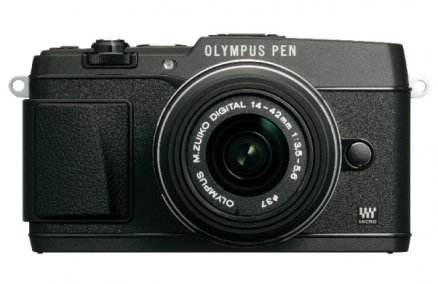
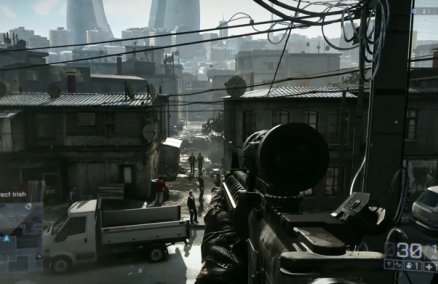






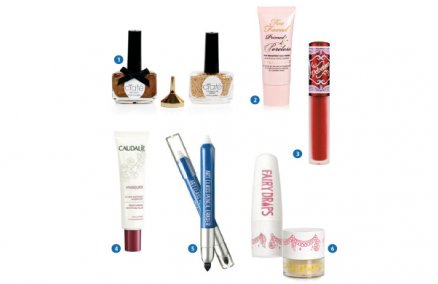
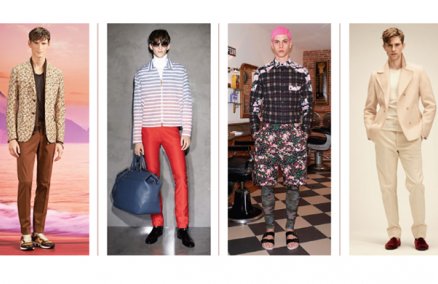
 Kenny Leck
Kenny Leck Yap Chang Ten
Yap Chang Ten Chua Hwee Yee
Chua Hwee Yee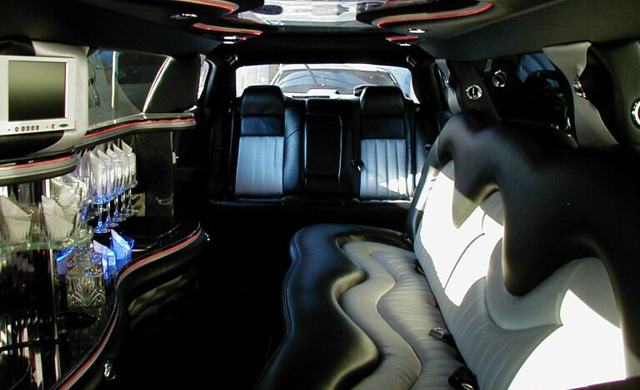
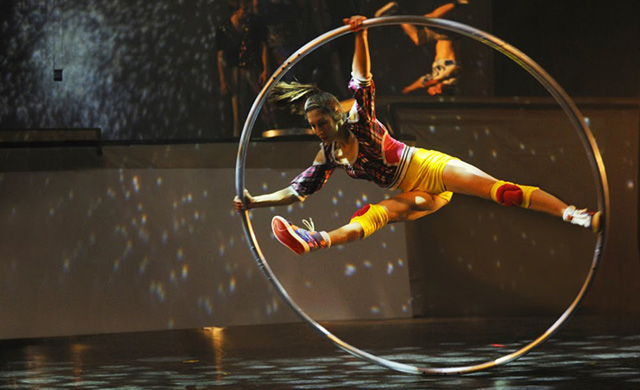




 Note to Self: In case all this indulgence kills you, snag a prime spot at Asia’s largest six-star columbarium Nirvana Memorial Garden (950 Old Choa Chu Kang Rd., 9047-0330,
Note to Self: In case all this indulgence kills you, snag a prime spot at Asia’s largest six-star columbarium Nirvana Memorial Garden (950 Old Choa Chu Kang Rd., 9047-0330, 
